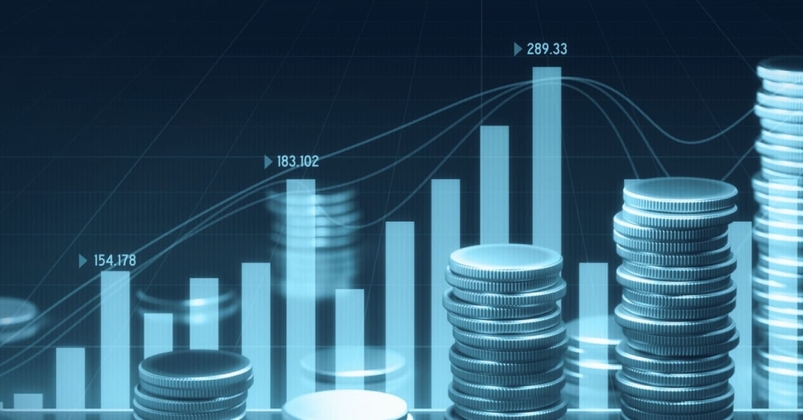Understanding Inflation

Before digging into the data in more detail, it is important to recognise two other terms that frequently come up when discussing prices:
- Disinflation: a fall in the rate of inflation; prices are still rising, simply at a slower rate - a fall in CPI from 2%, to 1%, for example, would represent disinflation
- Deflation: a decrease in the general price of goods and services within an economy
It is also important to stress that a certain level of inflation is a normal part of the economic cycle, and is actually healthy for the economy at large. Inflation tends to become an issue either when it begins to spike higher, or when an economy is at risk of slipping into deflation, the former having the potential itself to spark recession, and the latter having the potential to turn a recession into a depression.
There are two inflation gauges that markets typically pay most attention to:
- CPI - The Consumer Price Index
- PPI - The Producer Price Index
Other inflation gauges are released, such as import/export prices, and measures like the RPI (Retail Price Index) in the UK. However, markets typically only react significantly to the CPI and PPI figures mentioned above.
In the US, both of these reports are released around the middle of the month following the reference month, at 8:30am ET, with the PPI release typically coming one trading day after the release of the more widely-watched CPI report.
CPI
As the name would suggest, the consumer price index (CPI) tracks the change in the price of a range of goods and services included within a weighted basket, composed by the BLS, in an attempt to mirror typical purchases made by households on a monthly basis. The basket is weighted according to the percentage of household expenditure which goes towards each item.
The data is typically quoted as a percentage change in both MoM and YoY terms, with the non-seasonally adjusted figure tending to be the data that markets pay most attention to. As noted, central banks typically target CPI at 2%, hence any deviations above/below this level are likely to, respectively, have hawkish/dovish policy implications, though the direction of travel is typically more important for rates traders than the inflation rate itself.
The CPI release is split into two parts:
- Headline: the overall CPI measure, incorporating the entire weighted basket of goods
- Core: a measure which excludes the volatile food and energy components of the basket from the calculation, hence leading to a less noisy, and likely more accurate, gauge of underlying price pressures within the economy
Policymakers, typically, pay greater attention to the core gauge than its headline counterpart, given how it is considered a truer indication of how price pressures are evolving, and how policy may, or may not, be impacting the inflation outlook.
PPI
The producer price index (PPI) goes by many other names, including the wholesale price index, and ‘factory gate inflation’, though all refer to the same release. In a similar manner to the CPI calculation, PPI is deduced by the BLS monitoring the prices of a range of items across the various stages of the manufacturing process, with these prices collected monthly, and weighted (in the US) according to their contribution to GDP.
As with its consumer counterpart, the PPI gauge is also split into headline and core measures, as well as typically being displayed as a percentage change in both MoM and YoY terms.
The PPI, however, provides additional data compared to the CPI metric, with the PPI basket including numerous items that are not in the consumer basket - such as raw materials and intermediate goods - while also displaying information about prices before the retail level has been determined. While the overlap between the two is not perfect, PPI is typically a leading indicator for CPI, as price increases/decreases slowly but surely make their way through the value chain to the end-consumer. PPI can also be used to gauge whether any rise in costs is being driven primarily by supply, or by demand. Importantly, though, PPI does not include any information on services prices, which is by far the largest sector of the US economy.
This, coupled with the fact that PPI is typically released after the same month’s CPI figure has dropped, means that its release typically results in substantially less market impact, though this should not take away from the macroeconomic conclusions one can draw from the report.
Related articles
Pepperstone không đại diện cho việc tài liệu được cung cấp ở đây là chính xác, hiện tại hoặc đầy đủ, và do đó không nên dựa vào nó. Thông tin, có phải từ bên thứ ba hay không, không được coi là một khuyến nghị; hoặc một đề nghị mua bán; hoặc một lời mời mua bán bất kỳ chứng khoán, sản phẩm tài chính hoặc công cụ nào; hoặc tham gia vào bất kỳ chiến lược giao dịch cụ thể nào. Nó không tính đến tình hình tài chính hoặc mục tiêu đầu tư của độc giả. Chúng tôi khuyên bất kỳ độc giả nào của nội dung này nên tìm kiếm lời khuyên của riêng mình. Mà không có sự chấp thuận của Pepperstone, việc sao chép hoặc phân phối lại thông tin này không được phép.







